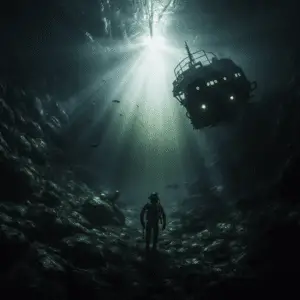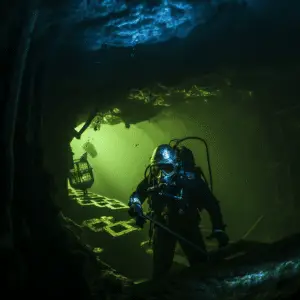Everyone has seen or at least heard of the film 47 meters down. Now, it may not be a great film, but the plot is at least interesting. The film shows two sisters positioned in a cage that is at 47 meters depth in the water. In this cage, they have to take on the ocean’s deadliest predator- the shark. Though the threat of becoming a meal for a shark is terrifying, there are other things that you would have to worry about at 47 meters down, such as compression and breathing. So, how deep are 47 meters, and can you survive?
Important plot points

To figure out whether or not you could really survive the events that occur 47 meters down, you should first understand some of the plot points that would, in fact, be an issue, aside from the shark.
Isolation
The movie centers on the two sisters being confined, with no one knowing where they are or how to find them. Snorkeling and diving are risks. More you dive, the less visible you are to others. This is a major concern when diving deeper. Divers-down flags help snorkelers and divers deal with this. Different flags indicate different things, but all indicate a diver. This will inform surrounding boaters and swimmers that an incident may have occurred if nobody resurfaces after a long period.
Nitrogen Narcosis
Another event that occurs in the film that is one of the more significant plot twists of the entire movie is the introduction of nitrogen narcosis. Nitrogen narcosis is an exact thing and can definitely happen in the real world. This basically occurs when you are breathing in gases at a low depth such as 47 meters and can lead to hallucinations and fainting. Instructors never recommend that you exceed 40 meters, as it becomes very common and very deadly.
Pressure
Though the two sisters use a full-face scuba mask within the film and are protected from the pressure that can come with unregulated air, the reality is that when you are 47 meters down, you will fall victim to the pressure of unregulated air. As you descend into the water, the pressure on your body increases with every meter. In the film, this is shown with the use of a bloody nose. However, the effects would, in reality, be far more severe than this. If you don’t descend slowly, then the pressure on your body can lead to popped blood vessels, restricted airwaves, and restricted sinuses.
Usually, unless you are diving with a costly company, you will use half masks. If you were to descend to 47 meters, you would experience something called mask squeeze. This happens when you cannot regulate the air in your mask, and the mask then squeezes onto your face, which could lead to bruising and further damage.
Equalizing
Something else that would need to occur when diving to such a depth is equalizing. This is a slow task, and it is used when divers or snorkelers descend into the water. This is basically done to handle any harsh pressure in the water. However, there does come a time when the pressure is too much, and even equalizing won’t help. When this happens, a number of horrible things could occur as a result. For example, you could burst your eardrums or even have irreversible damage to your blood vessels.
The Science
Now that we have covered some of the plot points of the film and some of the events that have happened, it is now time to have a look at the science behind 47 meters down.
How deep Are 47 meters down?

If you’re having trouble imagining 47 meters deep, the Statue of Liberty is the same height. In water, this is a deep dive.
When considering how deep 47 meters is, consider the diving equipment needed. The most important piece of equipment affected is your oxygen tank.
You breathe more as you go deeper into the sea. A consistent oxygen consumption above the surface will provide you 2 hours of air in a tank. This decreases with depth, thus two hours can become 30 minutes of oxygen. Remember to descend carefully into the water to equalize and handle any excessive pressure. It takes 10 minutes to descend into the sea and 3 minutes to ascend, as you may naturally do this faster.
This means you have little time in the water and may run out of oxygen at low depths. Thus, oxygen consumption is one of the main challenges of diving, and instructors advise against diving above 40 meters.
Remember not to rise all at once. To avoid bends, decompression should be slow with several stops.
